ART BASEL IN BASEL 2024: A FAIR FOR EVERY BUDGET?
The Art Basel in Basel fair concluded on June 16th, signaling the near end of the market season before summer. Despite the June London auctions (featuring works from antiquity to contemporary art) this year’s London season is notably diminished.

The Masterpiece art fair, previously organized by MCH Group (also the parent group of Art Basel), was closed last year. Additionally, Christie’s has scaled down to a smaller auction of contemporary art, resembling a mid-season sale. The reasons for this are not entirely clear, but it likely reflects an attempt to recalibrate the market offerings. There is a limit to the material available for sale and the capacity of collectors to absorb it. The nonstop events in the Modern and Contemporary field since early May in New York, including Frieze, satellite fairs, and a full week of auctions, followed by Art Basel in Basel, have likely led to this adjustment.
The traditionally significant June auction week in Europe seems to be shifting to October, aligning with the London Frieze and another Art Basel event, this time in Paris. Art Basel in Paris, the new name of the fair after two years of Paris+, will take place at the newly renovated Grand Palais. Conversations in Basel suggested that fewer Americans attended the Swiss fair, possibly opting for Paris instead.
During my week at Art Basel, I observed that most visitors were European, with fewer Asian and American attendees than in previous years. Sales reports varied among galleries; major galleries reported significant sales on the first day, with notable turnover of pieces. However, smaller galleries generally described business as “okay,” meaning they covered costs but achieved little more. The fair's offerings were interesting yet conservative, featuring many blue-chip modern and contemporary names. Few booths outside the “Features” section, which focuses on solo shows of historical artists, showcased solo presentations. A standout was first-time exhibitor Wendi Norris from San Francisco, who presented a solo show of Leonora Carrington. This included the only known double portrait of Carrington with her then-companion Max Ernst, sold on the fair's first day. Norris’s proposal was submitted months before Carrington’s record price of $28.5 million at Sotheby’s in May, which undoubtedly influenced their Basel sales. Carrington’s works on display at Basel ranged from $48,000 to $2.5 million.
-
Gallery Wendi Norris. Leonora Carrington. Courtesy of Art Basel
-
Gallery Wendi Norris. Leonora Carrington. Courtesy of Art Basel
The top sale was Joan Mitchell’s Sunflower painting from 1990-91, reportedly sold by David Zwirner for its asking price of $20 million on the first day. The painting was no longer on view the following day, likely en route to its new owner. Gagosian reported no specific sales but exhibited a quick turnover at their booth, indicating strong performance. According to an article on Artnet Pro1, the “mega” galleries and the “mini-megas” which include White Cube, Thaddaeus Ropac, and Levy Gorvy Dayan, made the biggest sales. The ground floor housed these large galleries, while the first floor featured smaller galleries with younger artists or regionally significant galleries like OMR and Kurimanzutto from Mexico and Fortes D’Aloia from Brazil.
A key difference between Art Basel in Basel and Miami is the significant presence of historical works in the Swiss town. In fact, this June, most notable reported sales occurred in this section, while primary market sales proved more challenging. To name a few, Hauser & Wirth sold a Georgia O’Keeffe for $13.5 million, a Philip Guston for $10 million, two Vilhelm Hammershøis for over $5 million each, and an Arshile Gorky drawing for $16 million, an impressive price for a work on paper. The Vedovi brothers sold René Magritte’s La Chambre d’écoute for an eight-figure sum and Pace Gallery sold an Agnes Martin for $14 million and three editions of a large Dubuffet for $859,000 each.
Another significant aspect of this year’s Art Basel was the presence of artists featured at the current Venice Biennale, such as Jeffrey Gibson, Yinka Shonibare, and Beatriz Milhazes, among others. Notably, the gallery Mennour from Paris showcased several neon-colored works with the phrase "Foreigners Everywhere" by the British-Italian collective Claire Fontaine, that was chosen as the name for the 2024 Biennale.
The Unlimited section at Art Basel showcased large artworks, reminiscent of a biennale but all available for purchase. Seventy artworks were on show. Fittingly, given today’s world, the first encountered by visitors was Mario Siroli’s Project for Peace, a monumental installation of 365 white flags symbolizing peace beyond national borders. Other notable works included Julio Le Parc’s Zepelín de Acero (Steel Zeppelin) and a significant presence of digital art.
Outside the hall, a collaboration between Turkish Airlines and media artist Refik Anadol showcased a project called Inner Portrait, exploring travel’s impact on human biology.
And to for the first time, this June Art Basel introduced a shop offering a range of items from pencils and key-rings to exclusive collectibles, available to fair visitors and the public during the event. The shop was consistently busy, allowing the 91,000 visitors the chance to purchase something from Art Basel, regardless of their budget.
1 Price sources:
https://news.artnet.com/market/art-basel-2024-art-prices-works-sold-2502183
https://www.artsy.net/article/artsy-editorial-sold-art-basel-2024
Related Topics
May interest you

Carolina Caycedo’s (London, UK, 1978) Tierra de los amigos (Land of Friends) arrives at the IVAM in Valencia after its run at the Artium museum in Vitoria.
CAYCEDO’S LAND OF FRIENDS AT VALENCIA’S IVAM
Carolina Caycedo’s (London, UK, 1978) Tierra de los amigos (Land of Friends) arrives at the IVAM in Valencia after its run at the Artium museum in Vitoria.

Carolina Caycedo’s (London, UK, 1978) Tierra de los amigos (Land of Friends) arrives at the IVAM in Valencia after its run at the Artium museum in Vitoria.
CAYCEDO’S LAND OF FRIENDS AT VALENCIA’S IVAM
Carolina Caycedo’s (London, UK, 1978) Tierra de los amigos (Land of Friends) arrives at the IVAM in Valencia after its run at the Artium museum in Vitoria.
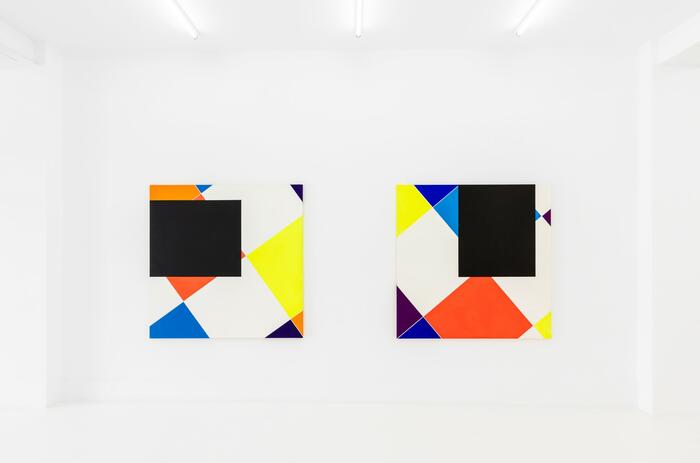
Madrid's Casado Santapau presents a retrospective exhibition of the work of Waldo Balart (Banes, Cuba, 1931), which covers the minimalist and precise, almost mathematical proposal of the geometries and the concrete abstraction of his works.
THE GEOMETRIC AND THE CONCRETE OF WALDO BALART IN CASADO SANTAPAU GALLERY

Last week's New York auctions, dubbed "Giga Week," saw art sales soar to an impressive $1.4 billion. This significant figure follows numerous sales at bustling art fairs over the past two weeks. While this amount represents a 22% decrease from the same week in 2023, and 55% less from 2022, auction houses performed admirably given the current challenging economic and political climate.
A BUYER’S MARKET: OPPORTUNITIES AMID UNCERTAINTY
Last week's New York auctions, dubbed "Giga Week," saw art sales soar to an impressive $1.4 billion. This significant figure follows numerous sales at bustling art fairs over the past two weeks. While this amount represents a 22% decrease from the same week in 2023, and 55% less from 2022, auction houses performed admirably given the current challenging economic and political climate.

The NY spring season has concluded with the major auctions of Contemporary and Modern art. While the sales have not been a disaster, most lots have sold either below or close to the low estimate, with some last-minute withdrawals. One year ago, the May sales already marked a clear recalibration of prices. Over the past 12 months, the market has continued its slowdown, and this week's sales have confirmed the trend. It is not a brusque fall or a crash, but a slow-motion downward spiral in prices, with very few but exciting surprises.
LATIN AMERICAN ART TRIUMPHS AT AUCTION
The NY spring season has concluded with the major auctions of Contemporary and Modern art. While the sales have not been a disaster, most lots have sold either below or close to the low estimate, with some last-minute withdrawals. One year ago, the May sales already marked a clear recalibration of prices. Over the past 12 months, the market has continued its slowdown, and this week's sales have confirmed the trend. It is not a brusque fall or a crash, but a slow-motion downward spiral in prices, with very few but exciting surprises.

Leonora Carrington’s painting "Les Distractions de Dagobert" (1945), valued between $12 to $18 million, is generating considerable excitement as it heads to auction at Sotheby's this May. Having been in an American collection since 1995, its upcoming sale not only reflects the escalating market demand for Carrington's pieces but also underscores the rising interest in female Surrealist artists.
LEONORA CARRINGTON'S BID FOR LATIN AMERICAN RECORD
Leonora Carrington’s painting "Les Distractions de Dagobert" (1945), valued between $12 to $18 million, is generating considerable excitement as it heads to auction at Sotheby's this May. Having been in an American collection since 1995, its upcoming sale not only reflects the escalating market demand for Carrington's pieces but also underscores the rising interest in female Surrealist artists.
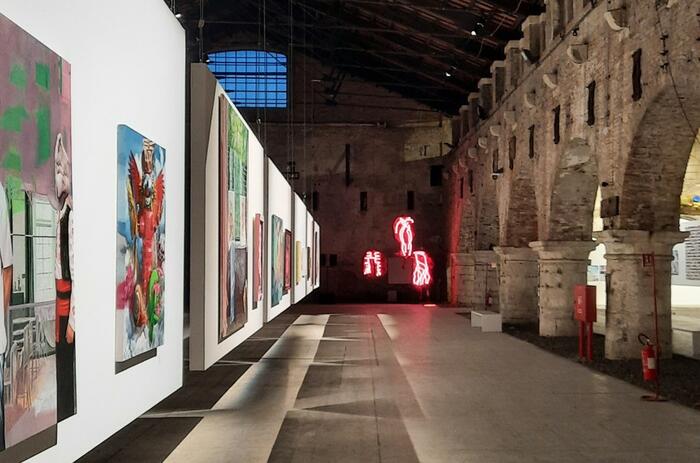
Arte Laguna Prize is a contemporary art competition for artists of all ages, nationalities and artistic backgrounds, regardless of gender and with free subject matter. The competition offers numerous opportunities for participating artists to expand their network, gain international visibility and access valuable resources for the development of their careers. Deadline to apply: July 31, 2024.
ARTE LAGUNA PRIZE: CALL FOR ARTISTS AND DESIGNERS
Arte Laguna Prize is a contemporary art competition for artists of all ages, nationalities and artistic backgrounds, regardless of gender and with free subject matter. The competition offers numerous opportunities for participating artists to expand their network, gain international visibility and access valuable resources for the development of their careers. Deadline to apply: July 31, 2024.
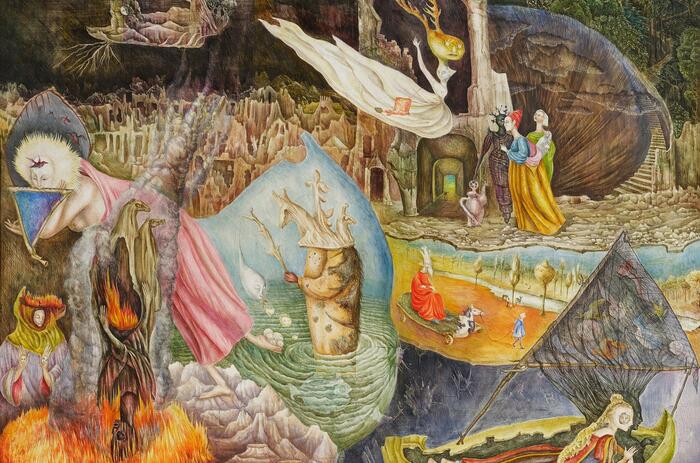
It is with great enthusiasm that we announce the inauguration of a new section in our magazine, dedicated to the fascinating and dynamic art market. This section is designed to serve both experts and news collectors as well as enthusiasts who wish to enter, participate, and better understand this exciting world. The section benefits from the guidance and advice of María Sancho-Arroyo, an expert in the field.
ART MARKET: NEW SECTION AT ARTE AL DÍA
It is with great enthusiasm that we announce the inauguration of a new section in our magazine, dedicated to the fascinating and dynamic art market. This section is designed to serve both experts and news collectors as well as enthusiasts who wish to enter, participate, and better understand this exciting world. The section benefits from the guidance and advice of María Sancho-Arroyo, an expert in the field.

The art market stands out as a unique and enigmatic sector, notoriously difficult to measure and largely unregulated. Yet, it never fails to captivate the media, drawing attention with its dazzling multimillion-dollar sales and the alluring glamour of art collecting.
THE PRICE OF ART: BEYOND THE MILLION-DOLLAR HYPE
The art market stands out as a unique and enigmatic sector, notoriously difficult to measure and largely unregulated. Yet, it never fails to captivate the media, drawing attention with its dazzling multimillion-dollar sales and the alluring glamour of art collecting.

Museu de Arte de São Paulo Assis Chateaubriand (MASP) features the exhibition Catherine Opie: Genre/Gender/Portraiture, with works by one of the leading names in contemporary international photography
CATHERINE OPIE AT MASP – THE GENDER OF PORTRAITURE
Museu de Arte de São Paulo Assis Chateaubriand (MASP) features the exhibition Catherine Opie: Genre/Gender/Portraiture, with works by one of the leading names in contemporary international photography

The eighty-first edition of the Whitney Biennial—the longest-running survey of contemporary art in the United States—features seventy-one artists and collectives grappling with many of today’s most pressing issues.
WHITNEY BIENNIAL 2024: EVEN BETTER THAN THE REAL THING
The eighty-first edition of the Whitney Biennial—the longest-running survey of contemporary art in the United States—features seventy-one artists and collectives grappling with many of today’s most pressing issues.

The Ukranian Pavilion addresses the othering effect of war, two years into the Russian Invasion, in Net Making at the 60th Venice Biennale.
UKRAINE AND THE EFECT OF WAR AT VENICE BIENNALE
The Ukranian Pavilion addresses the othering effect of war, two years into the Russian Invasion, in Net Making at the 60th Venice Biennale.
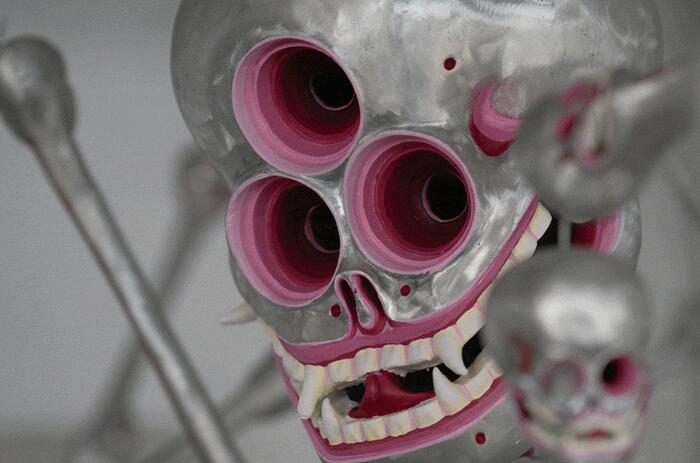
The Mongolian Pavilion at the Venice Biennale presents artist Ochirbold Ayurzana with the exhibition Discovering the Present from the Future. The proposal is curated by Oyuntuya Oyunjargal, the Cultural Envoy of Mongolia to Germany, and co-curated by Gregor Jansen, director of the Kunsthalle Düsseldorf in Germany.
OCHIRBOLD AYURZANA AT THE MONGOLIAN PAVILION
The Mongolian Pavilion at the Venice Biennale presents artist Ochirbold Ayurzana with the exhibition Discovering the Present from the Future. The proposal is curated by Oyuntuya Oyunjargal, the Cultural Envoy of Mongolia to Germany, and co-curated by Gregor Jansen, director of the Kunsthalle Düsseldorf in Germany.
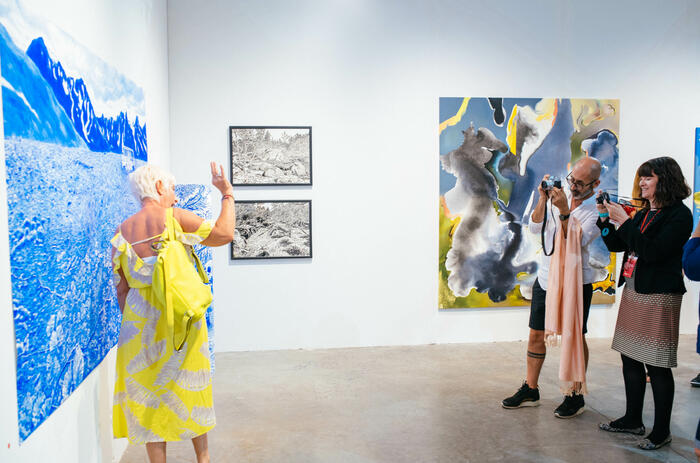
As 2024 draws to a close, it’s time to assess the state-of-the-art market over the past year. After the post-pandemic boom of 2021 and 2022, the art market suffered a marked slowdown in 2023, which has continued through 2024. According to auction data, the market has accumulated a total decline of 51% since 2022.
ART MARKET 2024: A YEAR FULL OF CHALLENGES
As 2024 draws to a close, it’s time to assess the state-of-the-art market over the past year. After the post-pandemic boom of 2021 and 2022, the art market suffered a marked slowdown in 2023, which has continued through 2024. According to auction data, the market has accumulated a total decline of 51% since 2022.

Carolina Caycedo’s (London, UK, 1978) Tierra de los amigos (Land of Friends) arrives at the IVAM in Valencia after its run at the Artium museum in Vitoria.
CAYCEDO’S LAND OF FRIENDS AT VALENCIA’S IVAM
Carolina Caycedo’s (London, UK, 1978) Tierra de los amigos (Land of Friends) arrives at the IVAM in Valencia after its run at the Artium museum in Vitoria.

Madrid's Casado Santapau presents a retrospective exhibition of the work of Waldo Balart (Banes, Cuba, 1931), which covers the minimalist and precise, almost mathematical proposal of the geometries and the concrete abstraction of his works.
THE GEOMETRIC AND THE CONCRETE OF WALDO BALART IN CASADO SANTAPAU GALLERY

Last week's New York auctions, dubbed "Giga Week," saw art sales soar to an impressive $1.4 billion. This significant figure follows numerous sales at bustling art fairs over the past two weeks. While this amount represents a 22% decrease from the same week in 2023, and 55% less from 2022, auction houses performed admirably given the current challenging economic and political climate.
A BUYER’S MARKET: OPPORTUNITIES AMID UNCERTAINTY
Last week's New York auctions, dubbed "Giga Week," saw art sales soar to an impressive $1.4 billion. This significant figure follows numerous sales at bustling art fairs over the past two weeks. While this amount represents a 22% decrease from the same week in 2023, and 55% less from 2022, auction houses performed admirably given the current challenging economic and political climate.

The NY spring season has concluded with the major auctions of Contemporary and Modern art. While the sales have not been a disaster, most lots have sold either below or close to the low estimate, with some last-minute withdrawals. One year ago, the May sales already marked a clear recalibration of prices. Over the past 12 months, the market has continued its slowdown, and this week's sales have confirmed the trend. It is not a brusque fall or a crash, but a slow-motion downward spiral in prices, with very few but exciting surprises.
LATIN AMERICAN ART TRIUMPHS AT AUCTION
The NY spring season has concluded with the major auctions of Contemporary and Modern art. While the sales have not been a disaster, most lots have sold either below or close to the low estimate, with some last-minute withdrawals. One year ago, the May sales already marked a clear recalibration of prices. Over the past 12 months, the market has continued its slowdown, and this week's sales have confirmed the trend. It is not a brusque fall or a crash, but a slow-motion downward spiral in prices, with very few but exciting surprises.

Leonora Carrington’s painting "Les Distractions de Dagobert" (1945), valued between $12 to $18 million, is generating considerable excitement as it heads to auction at Sotheby's this May. Having been in an American collection since 1995, its upcoming sale not only reflects the escalating market demand for Carrington's pieces but also underscores the rising interest in female Surrealist artists.
LEONORA CARRINGTON'S BID FOR LATIN AMERICAN RECORD
Leonora Carrington’s painting "Les Distractions de Dagobert" (1945), valued between $12 to $18 million, is generating considerable excitement as it heads to auction at Sotheby's this May. Having been in an American collection since 1995, its upcoming sale not only reflects the escalating market demand for Carrington's pieces but also underscores the rising interest in female Surrealist artists.

Arte Laguna Prize is a contemporary art competition for artists of all ages, nationalities and artistic backgrounds, regardless of gender and with free subject matter. The competition offers numerous opportunities for participating artists to expand their network, gain international visibility and access valuable resources for the development of their careers. Deadline to apply: July 31, 2024.
ARTE LAGUNA PRIZE: CALL FOR ARTISTS AND DESIGNERS
Arte Laguna Prize is a contemporary art competition for artists of all ages, nationalities and artistic backgrounds, regardless of gender and with free subject matter. The competition offers numerous opportunities for participating artists to expand their network, gain international visibility and access valuable resources for the development of their careers. Deadline to apply: July 31, 2024.

It is with great enthusiasm that we announce the inauguration of a new section in our magazine, dedicated to the fascinating and dynamic art market. This section is designed to serve both experts and news collectors as well as enthusiasts who wish to enter, participate, and better understand this exciting world. The section benefits from the guidance and advice of María Sancho-Arroyo, an expert in the field.
ART MARKET: NEW SECTION AT ARTE AL DÍA
It is with great enthusiasm that we announce the inauguration of a new section in our magazine, dedicated to the fascinating and dynamic art market. This section is designed to serve both experts and news collectors as well as enthusiasts who wish to enter, participate, and better understand this exciting world. The section benefits from the guidance and advice of María Sancho-Arroyo, an expert in the field.

The art market stands out as a unique and enigmatic sector, notoriously difficult to measure and largely unregulated. Yet, it never fails to captivate the media, drawing attention with its dazzling multimillion-dollar sales and the alluring glamour of art collecting.
THE PRICE OF ART: BEYOND THE MILLION-DOLLAR HYPE
The art market stands out as a unique and enigmatic sector, notoriously difficult to measure and largely unregulated. Yet, it never fails to captivate the media, drawing attention with its dazzling multimillion-dollar sales and the alluring glamour of art collecting.

Museu de Arte de São Paulo Assis Chateaubriand (MASP) features the exhibition Catherine Opie: Genre/Gender/Portraiture, with works by one of the leading names in contemporary international photography
CATHERINE OPIE AT MASP – THE GENDER OF PORTRAITURE
Museu de Arte de São Paulo Assis Chateaubriand (MASP) features the exhibition Catherine Opie: Genre/Gender/Portraiture, with works by one of the leading names in contemporary international photography

The eighty-first edition of the Whitney Biennial—the longest-running survey of contemporary art in the United States—features seventy-one artists and collectives grappling with many of today’s most pressing issues.
WHITNEY BIENNIAL 2024: EVEN BETTER THAN THE REAL THING
The eighty-first edition of the Whitney Biennial—the longest-running survey of contemporary art in the United States—features seventy-one artists and collectives grappling with many of today’s most pressing issues.

The Ukranian Pavilion addresses the othering effect of war, two years into the Russian Invasion, in Net Making at the 60th Venice Biennale.
UKRAINE AND THE EFECT OF WAR AT VENICE BIENNALE
The Ukranian Pavilion addresses the othering effect of war, two years into the Russian Invasion, in Net Making at the 60th Venice Biennale.

The Mongolian Pavilion at the Venice Biennale presents artist Ochirbold Ayurzana with the exhibition Discovering the Present from the Future. The proposal is curated by Oyuntuya Oyunjargal, the Cultural Envoy of Mongolia to Germany, and co-curated by Gregor Jansen, director of the Kunsthalle Düsseldorf in Germany.
OCHIRBOLD AYURZANA AT THE MONGOLIAN PAVILION
The Mongolian Pavilion at the Venice Biennale presents artist Ochirbold Ayurzana with the exhibition Discovering the Present from the Future. The proposal is curated by Oyuntuya Oyunjargal, the Cultural Envoy of Mongolia to Germany, and co-curated by Gregor Jansen, director of the Kunsthalle Düsseldorf in Germany.

As 2024 draws to a close, it’s time to assess the state-of-the-art market over the past year. After the post-pandemic boom of 2021 and 2022, the art market suffered a marked slowdown in 2023, which has continued through 2024. According to auction data, the market has accumulated a total decline of 51% since 2022.
ART MARKET 2024: A YEAR FULL OF CHALLENGES
As 2024 draws to a close, it’s time to assess the state-of-the-art market over the past year. After the post-pandemic boom of 2021 and 2022, the art market suffered a marked slowdown in 2023, which has continued through 2024. According to auction data, the market has accumulated a total decline of 51% since 2022.

Carolina Caycedo’s (London, UK, 1978) Tierra de los amigos (Land of Friends) arrives at the IVAM in Valencia after its run at the Artium museum in Vitoria.
CAYCEDO’S LAND OF FRIENDS AT VALENCIA’S IVAM
Carolina Caycedo’s (London, UK, 1978) Tierra de los amigos (Land of Friends) arrives at the IVAM in Valencia after its run at the Artium museum in Vitoria.

Madrid's Casado Santapau presents a retrospective exhibition of the work of Waldo Balart (Banes, Cuba, 1931), which covers the minimalist and precise, almost mathematical proposal of the geometries and the concrete abstraction of his works.
THE GEOMETRIC AND THE CONCRETE OF WALDO BALART IN CASADO SANTAPAU GALLERY

Last week's New York auctions, dubbed "Giga Week," saw art sales soar to an impressive $1.4 billion. This significant figure follows numerous sales at bustling art fairs over the past two weeks. While this amount represents a 22% decrease from the same week in 2023, and 55% less from 2022, auction houses performed admirably given the current challenging economic and political climate.
A BUYER’S MARKET: OPPORTUNITIES AMID UNCERTAINTY
Last week's New York auctions, dubbed "Giga Week," saw art sales soar to an impressive $1.4 billion. This significant figure follows numerous sales at bustling art fairs over the past two weeks. While this amount represents a 22% decrease from the same week in 2023, and 55% less from 2022, auction houses performed admirably given the current challenging economic and political climate.

The NY spring season has concluded with the major auctions of Contemporary and Modern art. While the sales have not been a disaster, most lots have sold either below or close to the low estimate, with some last-minute withdrawals. One year ago, the May sales already marked a clear recalibration of prices. Over the past 12 months, the market has continued its slowdown, and this week's sales have confirmed the trend. It is not a brusque fall or a crash, but a slow-motion downward spiral in prices, with very few but exciting surprises.
LATIN AMERICAN ART TRIUMPHS AT AUCTION
The NY spring season has concluded with the major auctions of Contemporary and Modern art. While the sales have not been a disaster, most lots have sold either below or close to the low estimate, with some last-minute withdrawals. One year ago, the May sales already marked a clear recalibration of prices. Over the past 12 months, the market has continued its slowdown, and this week's sales have confirmed the trend. It is not a brusque fall or a crash, but a slow-motion downward spiral in prices, with very few but exciting surprises.

Leonora Carrington’s painting "Les Distractions de Dagobert" (1945), valued between $12 to $18 million, is generating considerable excitement as it heads to auction at Sotheby's this May. Having been in an American collection since 1995, its upcoming sale not only reflects the escalating market demand for Carrington's pieces but also underscores the rising interest in female Surrealist artists.
LEONORA CARRINGTON'S BID FOR LATIN AMERICAN RECORD
Leonora Carrington’s painting "Les Distractions de Dagobert" (1945), valued between $12 to $18 million, is generating considerable excitement as it heads to auction at Sotheby's this May. Having been in an American collection since 1995, its upcoming sale not only reflects the escalating market demand for Carrington's pieces but also underscores the rising interest in female Surrealist artists.

Arte Laguna Prize is a contemporary art competition for artists of all ages, nationalities and artistic backgrounds, regardless of gender and with free subject matter. The competition offers numerous opportunities for participating artists to expand their network, gain international visibility and access valuable resources for the development of their careers. Deadline to apply: July 31, 2024.
ARTE LAGUNA PRIZE: CALL FOR ARTISTS AND DESIGNERS
Arte Laguna Prize is a contemporary art competition for artists of all ages, nationalities and artistic backgrounds, regardless of gender and with free subject matter. The competition offers numerous opportunities for participating artists to expand their network, gain international visibility and access valuable resources for the development of their careers. Deadline to apply: July 31, 2024.

It is with great enthusiasm that we announce the inauguration of a new section in our magazine, dedicated to the fascinating and dynamic art market. This section is designed to serve both experts and news collectors as well as enthusiasts who wish to enter, participate, and better understand this exciting world. The section benefits from the guidance and advice of María Sancho-Arroyo, an expert in the field.
ART MARKET: NEW SECTION AT ARTE AL DÍA
It is with great enthusiasm that we announce the inauguration of a new section in our magazine, dedicated to the fascinating and dynamic art market. This section is designed to serve both experts and news collectors as well as enthusiasts who wish to enter, participate, and better understand this exciting world. The section benefits from the guidance and advice of María Sancho-Arroyo, an expert in the field.

The art market stands out as a unique and enigmatic sector, notoriously difficult to measure and largely unregulated. Yet, it never fails to captivate the media, drawing attention with its dazzling multimillion-dollar sales and the alluring glamour of art collecting.
THE PRICE OF ART: BEYOND THE MILLION-DOLLAR HYPE
The art market stands out as a unique and enigmatic sector, notoriously difficult to measure and largely unregulated. Yet, it never fails to captivate the media, drawing attention with its dazzling multimillion-dollar sales and the alluring glamour of art collecting.

Museu de Arte de São Paulo Assis Chateaubriand (MASP) features the exhibition Catherine Opie: Genre/Gender/Portraiture, with works by one of the leading names in contemporary international photography
CATHERINE OPIE AT MASP – THE GENDER OF PORTRAITURE
Museu de Arte de São Paulo Assis Chateaubriand (MASP) features the exhibition Catherine Opie: Genre/Gender/Portraiture, with works by one of the leading names in contemporary international photography

The eighty-first edition of the Whitney Biennial—the longest-running survey of contemporary art in the United States—features seventy-one artists and collectives grappling with many of today’s most pressing issues.
WHITNEY BIENNIAL 2024: EVEN BETTER THAN THE REAL THING
The eighty-first edition of the Whitney Biennial—the longest-running survey of contemporary art in the United States—features seventy-one artists and collectives grappling with many of today’s most pressing issues.

The Ukranian Pavilion addresses the othering effect of war, two years into the Russian Invasion, in Net Making at the 60th Venice Biennale.
UKRAINE AND THE EFECT OF WAR AT VENICE BIENNALE
The Ukranian Pavilion addresses the othering effect of war, two years into the Russian Invasion, in Net Making at the 60th Venice Biennale.

The Mongolian Pavilion at the Venice Biennale presents artist Ochirbold Ayurzana with the exhibition Discovering the Present from the Future. The proposal is curated by Oyuntuya Oyunjargal, the Cultural Envoy of Mongolia to Germany, and co-curated by Gregor Jansen, director of the Kunsthalle Düsseldorf in Germany.
OCHIRBOLD AYURZANA AT THE MONGOLIAN PAVILION
The Mongolian Pavilion at the Venice Biennale presents artist Ochirbold Ayurzana with the exhibition Discovering the Present from the Future. The proposal is curated by Oyuntuya Oyunjargal, the Cultural Envoy of Mongolia to Germany, and co-curated by Gregor Jansen, director of the Kunsthalle Düsseldorf in Germany.

As 2024 draws to a close, it’s time to assess the state-of-the-art market over the past year. After the post-pandemic boom of 2021 and 2022, the art market suffered a marked slowdown in 2023, which has continued through 2024. According to auction data, the market has accumulated a total decline of 51% since 2022.
ART MARKET 2024: A YEAR FULL OF CHALLENGES
As 2024 draws to a close, it’s time to assess the state-of-the-art market over the past year. After the post-pandemic boom of 2021 and 2022, the art market suffered a marked slowdown in 2023, which has continued through 2024. According to auction data, the market has accumulated a total decline of 51% since 2022.

Carolina Caycedo’s (London, UK, 1978) Tierra de los amigos (Land of Friends) arrives at the IVAM in Valencia after its run at the Artium museum in Vitoria.
CAYCEDO’S LAND OF FRIENDS AT VALENCIA’S IVAM
Carolina Caycedo’s (London, UK, 1978) Tierra de los amigos (Land of Friends) arrives at the IVAM in Valencia after its run at the Artium museum in Vitoria.

Madrid's Casado Santapau presents a retrospective exhibition of the work of Waldo Balart (Banes, Cuba, 1931), which covers the minimalist and precise, almost mathematical proposal of the geometries and the concrete abstraction of his works.
THE GEOMETRIC AND THE CONCRETE OF WALDO BALART IN CASADO SANTAPAU GALLERY

Last week's New York auctions, dubbed "Giga Week," saw art sales soar to an impressive $1.4 billion. This significant figure follows numerous sales at bustling art fairs over the past two weeks. While this amount represents a 22% decrease from the same week in 2023, and 55% less from 2022, auction houses performed admirably given the current challenging economic and political climate.
A BUYER’S MARKET: OPPORTUNITIES AMID UNCERTAINTY
Last week's New York auctions, dubbed "Giga Week," saw art sales soar to an impressive $1.4 billion. This significant figure follows numerous sales at bustling art fairs over the past two weeks. While this amount represents a 22% decrease from the same week in 2023, and 55% less from 2022, auction houses performed admirably given the current challenging economic and political climate.

The NY spring season has concluded with the major auctions of Contemporary and Modern art. While the sales have not been a disaster, most lots have sold either below or close to the low estimate, with some last-minute withdrawals. One year ago, the May sales already marked a clear recalibration of prices. Over the past 12 months, the market has continued its slowdown, and this week's sales have confirmed the trend. It is not a brusque fall or a crash, but a slow-motion downward spiral in prices, with very few but exciting surprises.
LATIN AMERICAN ART TRIUMPHS AT AUCTION
The NY spring season has concluded with the major auctions of Contemporary and Modern art. While the sales have not been a disaster, most lots have sold either below or close to the low estimate, with some last-minute withdrawals. One year ago, the May sales already marked a clear recalibration of prices. Over the past 12 months, the market has continued its slowdown, and this week's sales have confirmed the trend. It is not a brusque fall or a crash, but a slow-motion downward spiral in prices, with very few but exciting surprises.

Leonora Carrington’s painting "Les Distractions de Dagobert" (1945), valued between $12 to $18 million, is generating considerable excitement as it heads to auction at Sotheby's this May. Having been in an American collection since 1995, its upcoming sale not only reflects the escalating market demand for Carrington's pieces but also underscores the rising interest in female Surrealist artists.
LEONORA CARRINGTON'S BID FOR LATIN AMERICAN RECORD
Leonora Carrington’s painting "Les Distractions de Dagobert" (1945), valued between $12 to $18 million, is generating considerable excitement as it heads to auction at Sotheby's this May. Having been in an American collection since 1995, its upcoming sale not only reflects the escalating market demand for Carrington's pieces but also underscores the rising interest in female Surrealist artists.

Arte Laguna Prize is a contemporary art competition for artists of all ages, nationalities and artistic backgrounds, regardless of gender and with free subject matter. The competition offers numerous opportunities for participating artists to expand their network, gain international visibility and access valuable resources for the development of their careers. Deadline to apply: July 31, 2024.
ARTE LAGUNA PRIZE: CALL FOR ARTISTS AND DESIGNERS
Arte Laguna Prize is a contemporary art competition for artists of all ages, nationalities and artistic backgrounds, regardless of gender and with free subject matter. The competition offers numerous opportunities for participating artists to expand their network, gain international visibility and access valuable resources for the development of their careers. Deadline to apply: July 31, 2024.

It is with great enthusiasm that we announce the inauguration of a new section in our magazine, dedicated to the fascinating and dynamic art market. This section is designed to serve both experts and news collectors as well as enthusiasts who wish to enter, participate, and better understand this exciting world. The section benefits from the guidance and advice of María Sancho-Arroyo, an expert in the field.
ART MARKET: NEW SECTION AT ARTE AL DÍA
It is with great enthusiasm that we announce the inauguration of a new section in our magazine, dedicated to the fascinating and dynamic art market. This section is designed to serve both experts and news collectors as well as enthusiasts who wish to enter, participate, and better understand this exciting world. The section benefits from the guidance and advice of María Sancho-Arroyo, an expert in the field.

The art market stands out as a unique and enigmatic sector, notoriously difficult to measure and largely unregulated. Yet, it never fails to captivate the media, drawing attention with its dazzling multimillion-dollar sales and the alluring glamour of art collecting.
THE PRICE OF ART: BEYOND THE MILLION-DOLLAR HYPE
The art market stands out as a unique and enigmatic sector, notoriously difficult to measure and largely unregulated. Yet, it never fails to captivate the media, drawing attention with its dazzling multimillion-dollar sales and the alluring glamour of art collecting.

Museu de Arte de São Paulo Assis Chateaubriand (MASP) features the exhibition Catherine Opie: Genre/Gender/Portraiture, with works by one of the leading names in contemporary international photography
CATHERINE OPIE AT MASP – THE GENDER OF PORTRAITURE
Museu de Arte de São Paulo Assis Chateaubriand (MASP) features the exhibition Catherine Opie: Genre/Gender/Portraiture, with works by one of the leading names in contemporary international photography

The eighty-first edition of the Whitney Biennial—the longest-running survey of contemporary art in the United States—features seventy-one artists and collectives grappling with many of today’s most pressing issues.
WHITNEY BIENNIAL 2024: EVEN BETTER THAN THE REAL THING
The eighty-first edition of the Whitney Biennial—the longest-running survey of contemporary art in the United States—features seventy-one artists and collectives grappling with many of today’s most pressing issues.

The Ukranian Pavilion addresses the othering effect of war, two years into the Russian Invasion, in Net Making at the 60th Venice Biennale.
UKRAINE AND THE EFECT OF WAR AT VENICE BIENNALE
The Ukranian Pavilion addresses the othering effect of war, two years into the Russian Invasion, in Net Making at the 60th Venice Biennale.

The Mongolian Pavilion at the Venice Biennale presents artist Ochirbold Ayurzana with the exhibition Discovering the Present from the Future. The proposal is curated by Oyuntuya Oyunjargal, the Cultural Envoy of Mongolia to Germany, and co-curated by Gregor Jansen, director of the Kunsthalle Düsseldorf in Germany.
OCHIRBOLD AYURZANA AT THE MONGOLIAN PAVILION
The Mongolian Pavilion at the Venice Biennale presents artist Ochirbold Ayurzana with the exhibition Discovering the Present from the Future. The proposal is curated by Oyuntuya Oyunjargal, the Cultural Envoy of Mongolia to Germany, and co-curated by Gregor Jansen, director of the Kunsthalle Düsseldorf in Germany.

As 2024 draws to a close, it’s time to assess the state-of-the-art market over the past year. After the post-pandemic boom of 2021 and 2022, the art market suffered a marked slowdown in 2023, which has continued through 2024. According to auction data, the market has accumulated a total decline of 51% since 2022.
ART MARKET 2024: A YEAR FULL OF CHALLENGES
As 2024 draws to a close, it’s time to assess the state-of-the-art market over the past year. After the post-pandemic boom of 2021 and 2022, the art market suffered a marked slowdown in 2023, which has continued through 2024. According to auction data, the market has accumulated a total decline of 51% since 2022.

Carolina Caycedo’s (London, UK, 1978) Tierra de los amigos (Land of Friends) arrives at the IVAM in Valencia after its run at the Artium museum in Vitoria.
CAYCEDO’S LAND OF FRIENDS AT VALENCIA’S IVAM
Carolina Caycedo’s (London, UK, 1978) Tierra de los amigos (Land of Friends) arrives at the IVAM in Valencia after its run at the Artium museum in Vitoria.

Madrid's Casado Santapau presents a retrospective exhibition of the work of Waldo Balart (Banes, Cuba, 1931), which covers the minimalist and precise, almost mathematical proposal of the geometries and the concrete abstraction of his works.
THE GEOMETRIC AND THE CONCRETE OF WALDO BALART IN CASADO SANTAPAU GALLERY

Last week's New York auctions, dubbed "Giga Week," saw art sales soar to an impressive $1.4 billion. This significant figure follows numerous sales at bustling art fairs over the past two weeks. While this amount represents a 22% decrease from the same week in 2023, and 55% less from 2022, auction houses performed admirably given the current challenging economic and political climate.
A BUYER’S MARKET: OPPORTUNITIES AMID UNCERTAINTY
Last week's New York auctions, dubbed "Giga Week," saw art sales soar to an impressive $1.4 billion. This significant figure follows numerous sales at bustling art fairs over the past two weeks. While this amount represents a 22% decrease from the same week in 2023, and 55% less from 2022, auction houses performed admirably given the current challenging economic and political climate.

The NY spring season has concluded with the major auctions of Contemporary and Modern art. While the sales have not been a disaster, most lots have sold either below or close to the low estimate, with some last-minute withdrawals. One year ago, the May sales already marked a clear recalibration of prices. Over the past 12 months, the market has continued its slowdown, and this week's sales have confirmed the trend. It is not a brusque fall or a crash, but a slow-motion downward spiral in prices, with very few but exciting surprises.
LATIN AMERICAN ART TRIUMPHS AT AUCTION
The NY spring season has concluded with the major auctions of Contemporary and Modern art. While the sales have not been a disaster, most lots have sold either below or close to the low estimate, with some last-minute withdrawals. One year ago, the May sales already marked a clear recalibration of prices. Over the past 12 months, the market has continued its slowdown, and this week's sales have confirmed the trend. It is not a brusque fall or a crash, but a slow-motion downward spiral in prices, with very few but exciting surprises.

Leonora Carrington’s painting "Les Distractions de Dagobert" (1945), valued between $12 to $18 million, is generating considerable excitement as it heads to auction at Sotheby's this May. Having been in an American collection since 1995, its upcoming sale not only reflects the escalating market demand for Carrington's pieces but also underscores the rising interest in female Surrealist artists.
LEONORA CARRINGTON'S BID FOR LATIN AMERICAN RECORD
Leonora Carrington’s painting "Les Distractions de Dagobert" (1945), valued between $12 to $18 million, is generating considerable excitement as it heads to auction at Sotheby's this May. Having been in an American collection since 1995, its upcoming sale not only reflects the escalating market demand for Carrington's pieces but also underscores the rising interest in female Surrealist artists.

Arte Laguna Prize is a contemporary art competition for artists of all ages, nationalities and artistic backgrounds, regardless of gender and with free subject matter. The competition offers numerous opportunities for participating artists to expand their network, gain international visibility and access valuable resources for the development of their careers. Deadline to apply: July 31, 2024.
ARTE LAGUNA PRIZE: CALL FOR ARTISTS AND DESIGNERS
Arte Laguna Prize is a contemporary art competition for artists of all ages, nationalities and artistic backgrounds, regardless of gender and with free subject matter. The competition offers numerous opportunities for participating artists to expand their network, gain international visibility and access valuable resources for the development of their careers. Deadline to apply: July 31, 2024.

It is with great enthusiasm that we announce the inauguration of a new section in our magazine, dedicated to the fascinating and dynamic art market. This section is designed to serve both experts and news collectors as well as enthusiasts who wish to enter, participate, and better understand this exciting world. The section benefits from the guidance and advice of María Sancho-Arroyo, an expert in the field.
ART MARKET: NEW SECTION AT ARTE AL DÍA
It is with great enthusiasm that we announce the inauguration of a new section in our magazine, dedicated to the fascinating and dynamic art market. This section is designed to serve both experts and news collectors as well as enthusiasts who wish to enter, participate, and better understand this exciting world. The section benefits from the guidance and advice of María Sancho-Arroyo, an expert in the field.

The art market stands out as a unique and enigmatic sector, notoriously difficult to measure and largely unregulated. Yet, it never fails to captivate the media, drawing attention with its dazzling multimillion-dollar sales and the alluring glamour of art collecting.
THE PRICE OF ART: BEYOND THE MILLION-DOLLAR HYPE
The art market stands out as a unique and enigmatic sector, notoriously difficult to measure and largely unregulated. Yet, it never fails to captivate the media, drawing attention with its dazzling multimillion-dollar sales and the alluring glamour of art collecting.

Museu de Arte de São Paulo Assis Chateaubriand (MASP) features the exhibition Catherine Opie: Genre/Gender/Portraiture, with works by one of the leading names in contemporary international photography
CATHERINE OPIE AT MASP – THE GENDER OF PORTRAITURE
Museu de Arte de São Paulo Assis Chateaubriand (MASP) features the exhibition Catherine Opie: Genre/Gender/Portraiture, with works by one of the leading names in contemporary international photography

The eighty-first edition of the Whitney Biennial—the longest-running survey of contemporary art in the United States—features seventy-one artists and collectives grappling with many of today’s most pressing issues.
WHITNEY BIENNIAL 2024: EVEN BETTER THAN THE REAL THING
The eighty-first edition of the Whitney Biennial—the longest-running survey of contemporary art in the United States—features seventy-one artists and collectives grappling with many of today’s most pressing issues.

The Ukranian Pavilion addresses the othering effect of war, two years into the Russian Invasion, in Net Making at the 60th Venice Biennale.
UKRAINE AND THE EFECT OF WAR AT VENICE BIENNALE
The Ukranian Pavilion addresses the othering effect of war, two years into the Russian Invasion, in Net Making at the 60th Venice Biennale.

The Mongolian Pavilion at the Venice Biennale presents artist Ochirbold Ayurzana with the exhibition Discovering the Present from the Future. The proposal is curated by Oyuntuya Oyunjargal, the Cultural Envoy of Mongolia to Germany, and co-curated by Gregor Jansen, director of the Kunsthalle Düsseldorf in Germany.
OCHIRBOLD AYURZANA AT THE MONGOLIAN PAVILION
The Mongolian Pavilion at the Venice Biennale presents artist Ochirbold Ayurzana with the exhibition Discovering the Present from the Future. The proposal is curated by Oyuntuya Oyunjargal, the Cultural Envoy of Mongolia to Germany, and co-curated by Gregor Jansen, director of the Kunsthalle Düsseldorf in Germany.

As 2024 draws to a close, it’s time to assess the state-of-the-art market over the past year. After the post-pandemic boom of 2021 and 2022, the art market suffered a marked slowdown in 2023, which has continued through 2024. According to auction data, the market has accumulated a total decline of 51% since 2022.
ART MARKET 2024: A YEAR FULL OF CHALLENGES
As 2024 draws to a close, it’s time to assess the state-of-the-art market over the past year. After the post-pandemic boom of 2021 and 2022, the art market suffered a marked slowdown in 2023, which has continued through 2024. According to auction data, the market has accumulated a total decline of 51% since 2022.


